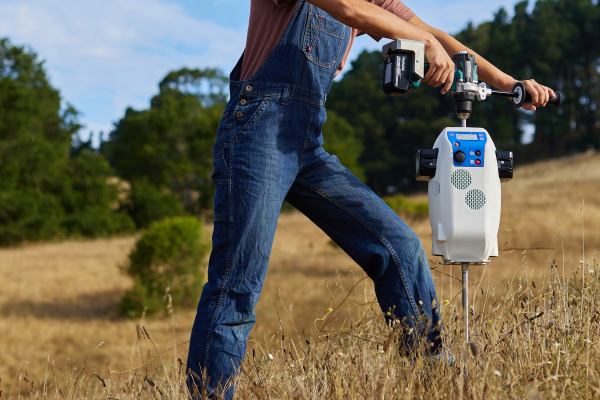When it comes to removing carbon dioxide from the atmosphere, one of the first questions is often: What should we do with it? Making new things is an obvious answer, though it’s still an expensive proposition. Stashing it underground is another, cheaper option; it usually involves compressing and injecting the gas into underground rock formations, kind of like oil drilling in reverse.
But when it comes to storing carbon underground, there’s another choice that’s even more straightforward: agricultural soils. Farming and ranching has the potential to store from 2 billion to 4 billion metric tons of carbon dioxide every year for between $45 and $100 per metric ton, according to the Intergovernmental Panel on Climate Change (IPCC). As carbon-removal schemes go, that’s pretty cheap.
“Soil science, for the last 20 years, has been banging their drum to say there’s an enormous opportunity here,” Yard Stick CEO Chris Tolles told TechCrunch+.
But how much carbon is held by soils — and how much they capture over time — is not an easy thing to measure. Most soil sampling is done by hand-digging cores out of the ground and sending the samples to a lab. It’s labor- and time-intensive, which means it’s not cheap.
As a soil scientist, Yard Stick scientific adviser and research collaborator Cristine Morgan was intimately familiar with it all. For years, she researched how to use probes to characterize soils, reducing the entire process down to one step. By the time Tolles contacted her, the technology was pretty well developed. In the fall of 2020, she, Tolles and chief engineer Kevin Meissner founded Yard Stick to commercialize it.
It works something like this: The probe part sits near the tip of what’s essentially a foot-and-a-half-long drill bit. It uses spectroscopy to determine how much carbon is locked in the soil. That basically means it shines a light on the soil through a sapphire lens and measures what gets reflected. The device samples hundreds of spectral bands, from visible violet light all the way up to near-infrared. The smarts of the unit sit in a case atop the drill bit; it’s a little bit bigger than a rugby ball. The whole thing is then attached to an off-the-shelf cordless drill, and a sample takes less than a minute to complete.
Tolles said this version is just the first of many, a proof of concept that will be further refined. Next year, the company plans to build a version that can be attached to the back of a truck, allowing the operator to drive up to a sample site, press a button, and let the rig do the rest of the work.
The different versions will help the company characterize soils in a range of different environments, but for now, Yard Stick is focusing on farms and ranches.
The startup recently closed a $10.6 million Series A round, TechCrunch+ has exclusively learned. The round was led by Toyota Ventures with participation from the Microsoft Climate Innovation Fund, the Nature Conservancy, Lowercarbon Capital, Breakthrough Energy Ventures and Pillar VC.
Tolles said the science behind the probe is solid and that the company will be presenting their data at a soil science meeting this fall. With the technology essentially de-risked, Yard Stick will be using the funding to scale up its operation. “We’re ready to deploy,” he said.
Right now, the company has field teams operating out of Ohio, Illinois, Minnesota, Colorado and California, putting it in the heart of the country’s major agricultural regions. Tolles said the next step is to add more equipment and crews to increase the “density of offering” in the Midwest, California and in grazing regions in the West.
Yard Stick charges customers based on how many acres they need samples for. Those customers aren’t farmers and ranchers, Tolles said, but rather third parties that work with farmers and ranchers to boost soil carbon on their lands. Those might include climate-conscious dairies or soil carbon project developers, he said. Yard Stick designs the sampling regimen and then takes the samples itself, processing the data in its own software. Since soils change slowly, the plan is to return three to five years later to resample.
Tolles emphasized that Yard Stick doesn’t take a cut from any carbon credit sales, saying it would undermine the integrity of his company’s data. “Imagine if your phlebotomist got a cut of your high blood pressure medication, you’d be like, ‘What the hell?’”
Yard Stick’s sales proposition might be aimed primarily at companies that are hoping to improve soil carbon retention for the purposes of removing carbon dioxide from the atmosphere. But the benefits of boosting soil carbon go further than simply fighting climate change.
Soil carbon is integral to agricultural productivity. It’s why white settlers thought they’d stumbled into farming heaven when they forced their way west from rocky New York and New England into the Ohio River Valley. The region’s black soils were a boon for productivity.
But the longer people farm the land, and the longer they use annual crops to do so, the less potential soils have to store carbon and retain their productivity. Most farmers care deeply about the health of their soils, but they’re also running businesses that bump up against the harsh realities of commodities prices.
Today, agriculture is a net emitter of carbon. In the U.S. alone, soil management represents about 5% of the country’s carbon emissions, according to the EPA. To become a meaningful carbon sink, it’s got a long way to go. But the potential upsides are significant, and plenty of farmers would be invested if the numbers penciled out. It’s not often that business opportunities represent a win-win, but when it happens, well, it’s probably pay dirt.
